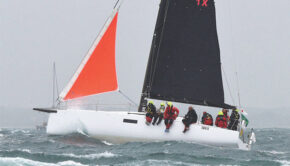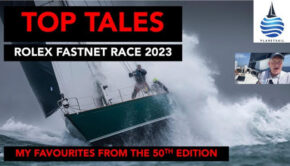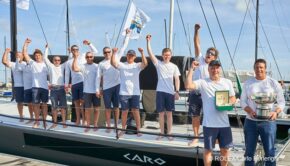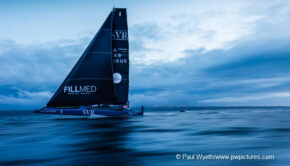What makes Fastnet Race a good thing?
Published on November 18th, 2020
In 1965, Fontella Bass and Bobby McClure released the song, Don’t Mess with a Good Thing. While they were singing about a cheating lover, this lyric has some reach:
“Don’t you be no fool
If you keep messing around now baby
Gonna mess up a good thing”
In the scope of offshore racing, the biennial Rolex Fastnet Race is a good thing, so good there’s a cap on entries, due in part because the finishing port of Plymouth can only accommodate so many boats.
The 2019 edition had 388 yachts on the start line from 27 different nations, but a year ago, to foster even greater participation, the Royal Ocean Racing Club (RORC), organizers of the Rolex Fastnet Race, changed the finish location for the 2021 and 2023 editions from Plymouth, UK to Cherbourg, France.
And that change has people singing, “Don’t you be no fool, if you keep messing around now baby, gonna mess up a good thing.”
The issue is now being put to a vote of the RORC membership, with Peter Nicholson as one of the signatories to the letter which has led to the RORC extraordinary general meeting about the Fastnet. Here are his concerns:
My principle concerns about the new course relate to the fairness of the race. The Fastnet is the world`s best and most popular of the three oldest and best known offshore races. This is because it has the most interesting course and it is the fairest test of yachts and crews.
In the Fastnet the yachts remain in touch with the fleet because the course takes them round a number of points which keep them together – Portland Bill, Start Point, the Lizard, Lands End, the Rock, The Bishop, and the Lizard again.
In the Newport-Bermuda and Sydney-Hobart races, the courses are point to point across open water and the fleets fan out after the start and do not come together again until very close to the finish.
In the Fastnet, tide plays an important part on the first leg to the Lizard but all the boats face roughly the same problems and the same conditions. Tidal timing is not critical. If the finish is at Cherbourg, the longest single leg of the course is the last one, the 190 miles from the Bishop Rock to the finish.
By this time the fleet will be well spread out and will have a huge choice as to which course to take. Some will hug the English coast for part of the way to avoid a foul tide, others may well go to the French coast for the same reason.
It is even possible that some boats will leave Alderney to port and come up the Alderney race if timing is right for the tide. However, for the last 20 miles or so, all boats will be sailing in some of the strongest tides in the English Channel which will be running at over 5 knots at times.
A boat`s finishing position will, more often than not, depend entirely on its time of arrival at this tidal stretch. Some will carry a strong fair tide for the last 6 hours of their race, others will face an even stronger foul tide. A boat may have sailed brilliantly to this point, but this will count for nothing if it arrives at the wrong stage of the tide.
This proposed change of course will completely ruin one of the main attractions of the Fastnet course – it`s fairness. This would be a tragedy and I sincerely hope that the RORC will reconsider its decision which seems to have been based solely on the quality of the post-race social events and the associated financial advantages for the club.









 We’ll keep your information safe.
We’ll keep your information safe.